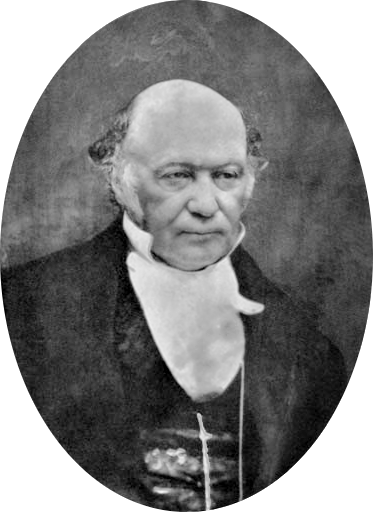
William Rowan Hamilton was born on August 4, 1805 in Dublin, Ireland. The fourth of nine children, he was sent at age three to live with his uncle James Hamilton, who ran a school in Talbots Castle, in County Meath. His uncle James observed that William, from an early age, had displayed a special proclivity for languages. By age 13 he had acquired, through his Uncle’s tutelage, some degree of fluency in about a dozen Indo-European languages.
By the time he was 16 years old, William had mastered most of Newton’s Principia, having already absorbed Newton’s Arithmetica Universalis. By age 18, Hamilton was accepted at Trinity College in Dublin, subsequently scoring the top grade in every subject in every year achieving a BA degree in both classics and mathematics in 1827. In that year, at the age of 22, he was appointed, over other highly-esteemed astronomers, Andrews Professor of Astronomy and Royal Astronomer of Ireland. Thereafter, he established a permanent residence at Dunsink Observatory and participated in some research in astronomy, though his real interest resided in the theoretical aspects of astronomy and in mathematics.
Around 1832, when William was 27 years of age, he formulated his theory of rays that provided a foundation for the study of light and optics. From this theory, he predicted that a single ray of light within a biaxal crystal must, in certain cases, yield a cone of refracted rays–a phenomenon known as conical refraction. When his prediction was verified by observation, his formulation of optics became a basis for other mathematical models describing the behavior of waves. A century later, his mathematical operators would be used in quantum physics to provide a wave-mechanical description of particles. In 1835, Hamilton was knighted and became Sir William Rowan Hamilton.
In the early 1840’s Hamilton was searching for ways to extend complex numbers to domains of higher dimension. This eventually led him to the discovery of what he considered to be his greatest contribution–quaterions. These are essentially vectors in 4-dimensions that violate the commutative laws of algebra. That is, for any two quarternions, a and b, it is not necessarily true that a*b = b *a. After their introduction, quaterions became a widely-used tool for the descriptions of different natural phenomena. Hamilton considered his discovery of quaternions to be his greatest achievement and one day, while walking with his wife in the Irish countryside, he carved with his penknife the multiplication table for quaternions into one side of the stone Broom Bridge.
In later life, Hamilton began to imbibe more heartily in alcohol to gain relief from the stress of concentration on mathematical matters, and in 1865, at the age of 60, he died from gout. Capturing the humility that characterized his disposition throughout his life, he once stated, “I have very long admired Ptolemy’s description of his great astronomical master, Hipparchus, as a labor-loving and truth-loving man. Be such my epitaph.”
